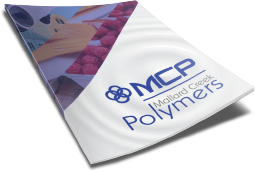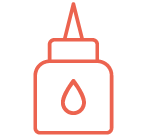Moisture Vapor Transmission Rate: What You Need to Know
What Is MVTR? Moisture vapor transmission rate, also called water vapor transmission rate (WVTR), is the amount of water vapor that passes through a substance or material over a specific period of time. Why Is MVTR Important? Having the ability..
What Is MVTR?
Moisture vapor transmission rate, also called water vapor transmission rate (WVTR), is the amount of water vapor that passes through a substance or material over a specific period of time.
Why Is MVTR Important?
Having the ability to measure MVTR is a key factor in controlling moisture in a wide range of products. Manufacturers in many different industries use rigorous methods of moisture control to ensure the integrity and shelf life of their products, including foods, pharmaceuticals, and building materials.
Scientists have developed coatings based on styrene-butadiene polymer emulsions to help control moisture, such as liquid applied membranes in the construction sector. To control moisture in other applications, such as food packaging, manufacturers rely on a combination of barrier coatings and product packaging.
Download our Barrier Coatings Technical Bulletin:
How Is MVTR Measured?
Measurements for controlling moisture vary widely by industry and application. Some industries use gravimetric techniques that measure the gain or loss of moisture by mass, while others use special instrumentation and standards.
The conditions under which products are manufactured, shipped, and applied is a key driver for moisture management, and these conditions heavily influence how testers measure MVTR.
Several international organizations, such as ASTM International (formerly the American Society for Testing and Materials), set standards for the scientific community to follow with regard to measuring MVTR. The international standard of measurement is in grams per square meters per day (g/m²/day). In the U.S., we also use grams per square inch per day (g/in²/day).
Testers must make allowances, both for measurement standards and procuring the correct instruments, based on the properties of the materials they are testing. Performance fabrics used in athletic wear, for example, may release much greater levels of moisture levels than films used for food preservation.
Factors Affecting MVTR and Barrier Design
The specific conditions under which applications are used are one of the most critical factors in controlling MVTR. Scientists developing vapor barriers must evaluate the range of temperatures and humidity levels that the application will face during its life cycle to ensure that the barrier provides optimal moisture management.
A barrier material’s design can have one of the greatest effects on MVTR. When product developers test materials, they typically use sheets of material for the testing process. However, testing other aspects of the material’s design, such as seams, creases, and openings—depending on the design of the product or application—are just as critical for effective moisture management.
Coatings and Membranes
Many packaging materials and applications require a functional coating to perform as a moisture barrier, to seal in freshness and keep out moisture or humidity. In food packaging, the MVTR measures the effectiveness of the moisture barrier to prevent water vapor from being transmitted from one side of the paper or packaging to the other.
This low MVTR coating helps to provide protection, ensure a longer shelf-life and better product and package integrity. MCP’s Tykote latexes are part of a full line of proven products designed to give various combinations of barrier properties, including low MVTR. These products are designed to be used in finished coatings by themselves or in combinations with other ingredients.
In the building and construction industry, coatings and membranes are used to manage water resistance and MVTR to control the flow of water, such as vapor barriers used in basements, crawl spaces, and bathrooms. These materials can be liquid applied membranes, foils, or plastic films. Typically, vapor barriers work to eliminate moisture related to intense humidity, leaky pipes or successive days of rain. Effectively managing moisture protects the structure from humidity, keeping it climate-controlled and safe from mold and mildew.
Emulsion Polymers for Managing MVTR
The most effective way to manage MVTR in a wide range of industries is by using proven emulsion polymers designed to provide exactly the right amount of protection for the specific application.
At Mallard Creek Polymers, the leader in barrier emulsion polymers, we work with our customers to manage moisture in their applications by carefully calibrating speciality emulsion polymers they use to optimize their product designs. To learn more about what we can do to meet your needs for managing the water vapor transmission rate, contact us today.

 Construction
Construction
 Nonwovens
Nonwovens
 Adhesives
Adhesives
 Textiles
Textiles
 Printing & Packaging
Printing & Packaging
 Paper
Paper
 Paints & Coatings
Paints & Coatings





